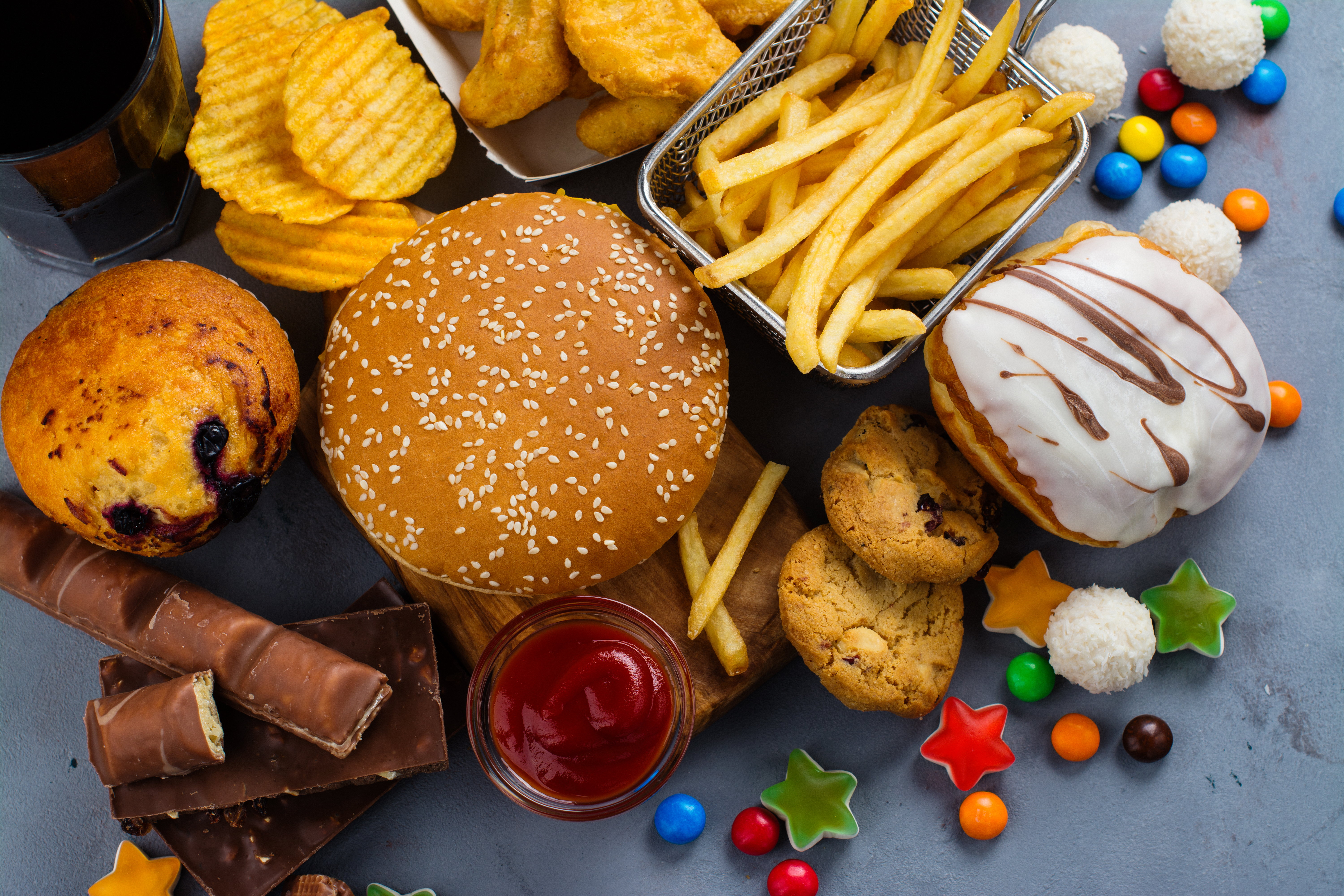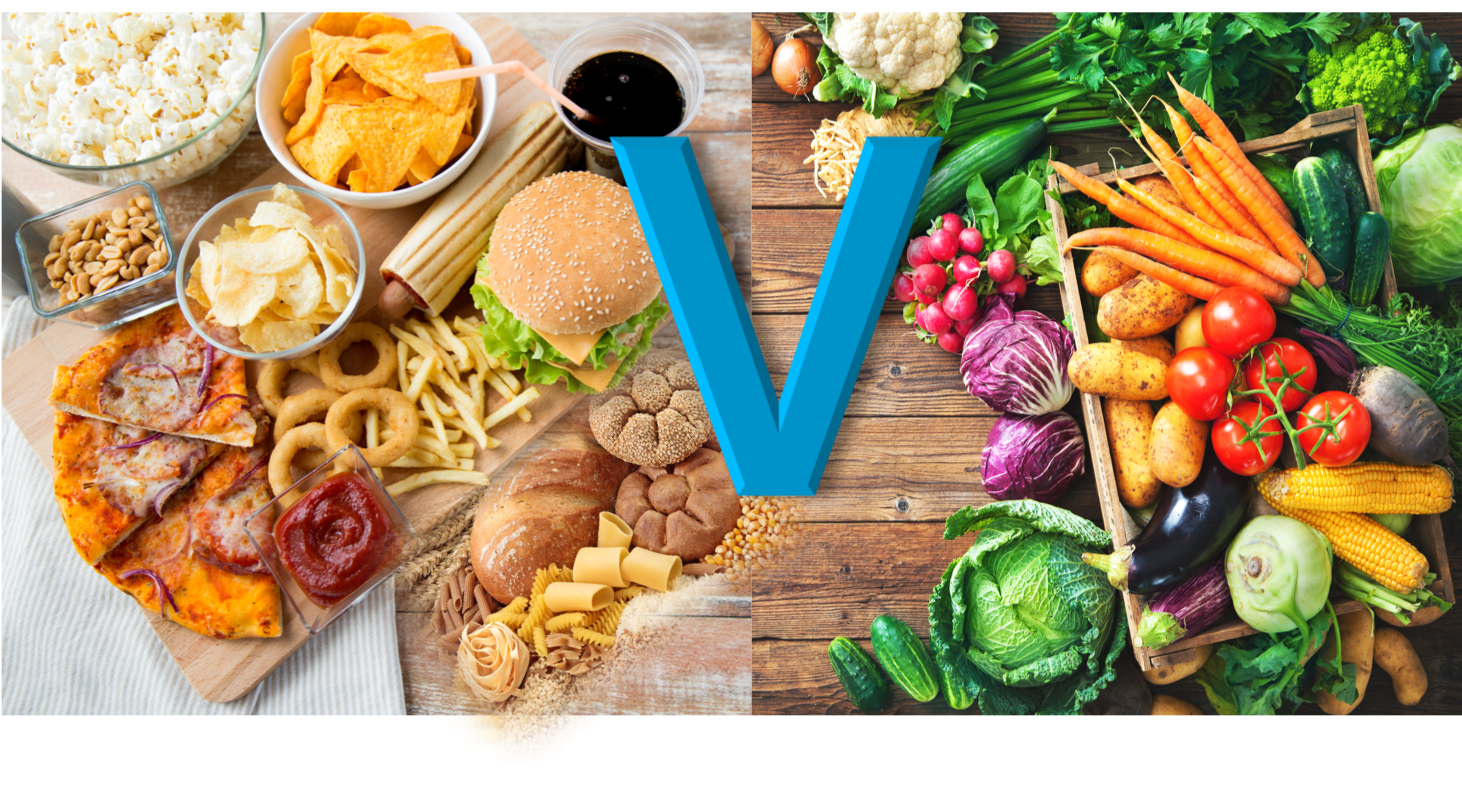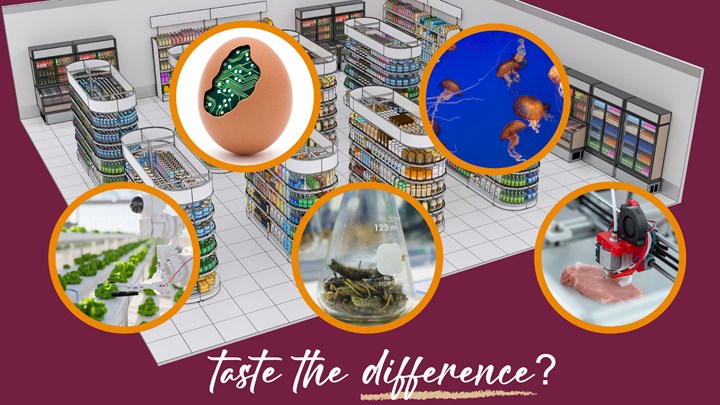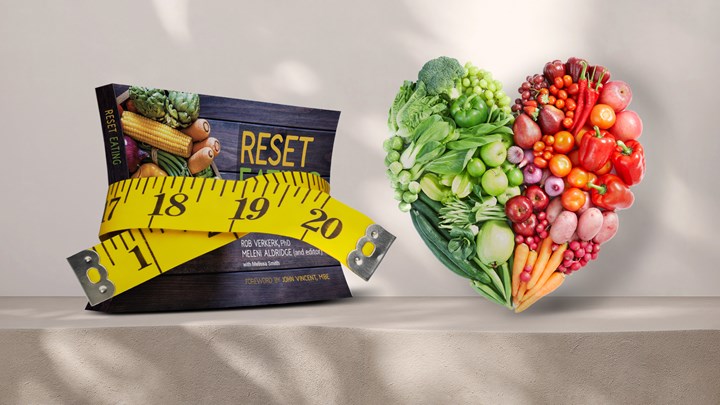Content Sections
London Transport has just banned advertising of unhealthy and junk foods on the Tube, buses and trains. Sounds like a good plan given the UK’s ever-expanding waistlines, particularly in children, and our ‘see it, want it’ vulnerability to visual cues of foods. Unfortunately, they’re including foods 'high' in fat and salt under the unhealthy banner, but that’s a story for another week. Given that Big Food is mobilising an arsenal of ultra-processed, low fat, low salt, artificially sweetened foods and drink, we’re not overly hopeful of the overall health benefit, but it’s a step in the right direction at least.
Since some of the least healthy, as well as the healthiest, foods available are comprised largely of carbohydrates, we provide you here with a 101 on carbohydrates. Familiar to most, carbs represent one of three macronutrient groups in our food (proteins and fats being the other two) that, along with micronutrients such as vitamins and minerals and phytonutrients, are essential or at least beneficial for health.
We’re often told that carbs are an essential food group, necessary for energy metabolism, health and wellbeing. Moreover, mainstream dieticians would have you believe that a large part of your daily diet should be made up of carbohydrates. But is this right? And will you suffer or thrive by cutting out – or down on – carbs?
The low-down on carbs
Carbohydrates are biomolecules made up of carbon, hydrogen and oxygen. Put simply they are a form of stored energy packaged especially into plants. Today, the term carbohydrate is generally used to refer to starchy foods such as grain-based bread, pasta and cereals; root vegetables like potatoes, carrots, parsnips and beetroot; and sugars. However, all vegetables are sources of complex carbs, so even when you cut out starchy carbs, you’re never carb-free, unless you also cut out all vegetables, fruit, mushrooms, algae (e.g. seaweeds), herbs and spices. When we eat plants, we eat carbs, even though people don’t seem to think of vegetables as being sources of carbohydrate. But, because food is information, different types of carbs, along with other components in those foods or associated meals, speak a different language in the body.
The simplest form of carbohydrates are single unit sugars known as monosaccharides. These link together to form complex carbohydrates known as disaccharides, oligosaccharides (also known as prebiotics as they provide food for our gut microbiota) and polysaccharides, which can be further categorised into starch and non-starch polysaccharides.
Table 1. Classes and function of carbohydrates
|
Class |
Example |
Description |
|
|
Monosaccharides |
Glucose, fructose, galactose |
Single unit sugars |
Digestible |
|
Disaccharides |
Sucrose, lactose, maltose |
Double unit sugars |
Digestible |
|
Oligosaccharides |
Fructo-oligosaccharides, inulin, maltodextrins, raffinose, verbascose, stachyose |
3-9 sugar unit (monosaccharide) chains |
Indigestible (fermented in gut) |
|
Starch polysaccharides |
Amylose, amylopectin, maltodextrins |
10 or more sugar unit (monosaccharide) chains |
Indigestible (fermented in gut) |
|
Non-starch polysaccharides (dietary fibre) |
Cellulose, pectins, hemicelluloses, gums, inulin |
Dietary fibre. Humans cannot digest, but various gut bacteria can |
Indigestible (fermented in gut) |
The time it takes for your digestive system to breakdown carbohydrate units into useable glucose is dependent on how simple or complex it is (i.e. the length or branching of the carbon backbone). The more complex the chain, the longer it takes to breakdown and enter your bloodstream, hence the more stable your blood sugar. The resulting glucose is then absorbed into your bloodstream ready to be used by your cells to make energy in the form of adenosine triphosphate (ATP). ATP is our body’s energy currency, used to fuel the myriad functional and metabolic processes that allow us to perform optimally in dynamic (ever changing) environments.
It’s important to remember that whilst plant foods are carbohydrate dominant, they generally also contain varying levels of protein and fats. It’s the combination of macronutrients (carbs, proteins and fats) in a food source (or meal) that influences the rate at which they are broken down and therefore its effect on our blood glucose levels.
Many carbs in plant foods are undigestible for us, but are necessary to feed our gut microbiome. Most oligosaccharides (except maltodextrin), some starches and all non-starch polysaccharides are resistant to digestion. They pass into the large bowel where they are fermented by our gut bugs to make short-chain fatty acids (SCFAs) providing energy both for us and the variety of organisms in our gut. These resistant carbs also provide essential fibre which promotes healthy detoxification and elimination.
Delivering essential phytonutrients, compounds that help protect against disease and promote health, plants are integral to good health. They are nature’s pharmacy – our first medicine, so it’s no surprise that the non-nutritive, medicinal consumption of a diverse range of plant foods has been long known in our nearest non-human primate relatives, chimpanzees, bonobos and gorillas. Whilst we benefit hugely from leafy and coloured vegetables, the vast majority of us can get along very nicely without the starchy carbs that come from grains and large amounts of root vegetables. Recreating our ‘diet of origin’ and becoming metabolically flexible, where the burning of fat yields ketones as an additional source of ATP, with glucose from carbs as a secondary source, helps promote long-term health, build muscle and reduce the effects of ageing.

Carbohydrate loading
Talking of fuel, in energy terms 1 gram of carbohydrate or protein provides 4 calories, whereas 1 gram of fat provides us with 9 calories, making fats a far more efficient energy source. It’s no wonder that burning fat for energy was our evolutionary norm and the choice for survival.
You may have seen the terms 'glycaemic index' and 'glycaemic load' attributed to foods that are high in carbs. Carb-containing foods are also described as being high or low glycaemic. The Glycaemic Index (GI) is a way of ranking foods according to how quickly they increase blood glucose levels. Foods with a GI of less than 55 are digested, absorbed and metabolised more slowly causing a slower increase in blood glucose and therefore insulin levels. An extension of this is glycaemic load (GL), which considers the quantity and quality of carbs eaten giving a more accurate picture of how high your blood sugar levels go and for how long after eating a typical serving of that food. The rate that your blood sugar level rises and for how long is called the 'glycaemic response'. A disordered and dysfunctional glycaemic response that’s allowed to continue for years is central to the creation of diseases like obesity, type 2 diabetes, cardiovascular disease and even many cancers.
Table 2: Glycaemic Index and Glycaemic Load of popular foods
| Food | GI (average) | Serve size (g) | Available carbohydrate | GL (per serving) |
|
Grains/Starches |
||||
| Rice noodles | 61 | 180 | 39 | 23 |
| Spaghetti, white | 44 | 180 | 48 | 21 |
| Cornflakes | 81 | 30 | 26 | 21 |
| Boiled white rice | 64 | 150 | 38 | 20 |
| Baked potato | 60 | 150 | 30 | 18 |
| Instant porridge | 66 | 250 | 26 | 17 |
| Muesli | 66 | 30 | 24 | 17 |
| Corn chips | 63 | 50 | 26 | 17 |
| Sweet potato | 61 | 150 | 28 | 17 |
| Boiled white potatoes | 50 | 150 | 28 | 14 |
| Wheat biscuits (aka Weetabix) | 70 | 30 | 19 | 13 |
| Porridge , whole oats | 58 | 250 | 22 | 13 |
| White bread toasted | 73 | 30 | 15 | 11 |
| White bread | 73 | 30 | 14 | 10 |
| Popcorn | 72 | 20 | 11 | 10 |
| Wholewheat bread | 71 | 30 | 13 | 9 |
| Sourdough rye bread | 53 | 30 | 12 | 6 |
|
Baked Goods |
||||
| Doughnut | 76 | 47 | 23 | 17 |
| Sponge cake | 46 | 63 | 36 | 17 |
| Croissant | 67 | 57 | 26 | 17 |
| Bluebery muffin | 59 | 57 | 29 | 17 |
|
Sugars |
||||
| Honey | 55 | 25 | 18 | 10 |
| Sucrose | 68 | 10 | 10 | 7 |
| Fructose | 19 | 10 | 10 | 2 |
| Agave nectar | 11 | 10 | 8 | 1 |
|
Chocolate |
||||
| Milk chocolate (Cadbury's) | 49 | 50 | 30 | 14 |
| Plain chocolate | 34 | 50 | 22 | 7 |
|
Fruit |
||||
| Orange juice | 50 | 250 | 26 | 13 |
| Banana | 52 | 120 | 24 | 12 |
| Apple juice | 40 | 250 | 29 | 12 |
| Pineapple, raw | 59 | 120 | 13 | 7 |
| Apple | 38 | 120 | 15 | 6 |
| Kiwi | 79 | 120 | 12 | 6 |
| Orange | 42 | 120 | 11 | 5 |
| Watermelon | 72 | 120 | 6 | 4 |
| Pear | 33 | 120 | 13 | 4 |
| Cherries | 22 | 120 | 12 | 3 |
|
Vegetables |
||||
| Parsnips | 97 | 80 | 12 | 12 |
| Sweetcorn | 54 | 80 | 17 | 9 |
| Chickpeas | 28 | 150 | 30 | 8 |
| Lentils | 29 | 150 | 18 | 5 |
| Cooked carrots | 47 | 80 | 6 | 3 |
| Green peas | 48 | 80 | 7 | 3 |
|
Dairy (inc plant 'milk') |
||||
| Ice-cream | 61 | 50 | 13 | 8 |
| Soy milk | 36 | 250 | 18 | 6 |
| Skimmed milk | 32 | 250 | 13 | 4 |
| Yogurt | 36 | 200 | 9 | 3 |
| Full fat milk | 27 | 250 | 12 | 3 |
|
Nuts |
||||
| Cashew Nuts (salted) | 22 | 50 | 13 | 3 |
| Peanuts | 23 | 50 | 6 | 1 |
Source: Foster-Powell K, et al. Am J Clin Nutr. 2002;76:5-56
Not all carbs speak the same ‘language’
The kicker in all of this is it’s not just how we process carbs internally, but also externally that makes the difference. Governments and mainstream dieticians would have you eating around 60% of your daily calories from carbs, and much of that from starchy carbs in the form of wholegrains. Yet it’s these kinds of foods, wholegrain or not, that we’re encouraged to eat that create a high glycaemic load (GL).
Regular consumption of high GI and GL foods that are also highly processed creates such frequent blood sugar elevation that the pancreas has to work overtime to make enough insulin to bring the blood sugar levels down. The over-exposure to insulin then starts to make cells under-responsive to the insulin's blood sugar lowering effects so more is produced - and 'insulin resistance', the precursor to type 2 diabetes, develops. The resulting elevated levels of insulin tell the body to store fat, so it becomes ever harder to mobilise fats and burn them for fuel. How does this all feel? Well, the yo-yoing of blood sugar levels contributes to tiredness, lack of concentration and more sugar cravings. Appetite regulation goes haywire, so you no longer feel satiated even when you've just eaten and have ample energy on-board. You think by grabbing that quick carb fix, be it a chocolate bar or other high glycaemic fix, you'll feel better. You do - for a short while - but when your blood sugar crashes an hour or so later, you do it all over again. The cycle goes on - until you make yourself properly ill, with type 2 diabetes and/or obesity, and a psychological craving for sweet, sugary, refined carb 'comfort foods'.
A perfect example of the kind of food that feeds into this pattern of eating are the so-called ‘healthy’ breakfast cereals. So highly processed you may as well eat a bowl of sugar as far as your body is concerned. Contrast that with minimally processed wholefood sources of carbs like steel cut oats and a handful of berries and it’s an entirely different kettle of fish as far as your blood sugar response is concerned.
The infiltration of our diet by Big Food’s processed and ultra-processed, calorific, nutrient-deficient carbs is driving the obesity crisis and in turn insulin resistance, Metabolic Syndrome (pre-diabetes), type 2 diabetes and a swathe of other chronic diseases. Despite continued insistence by health authorities that the driver of cardiovascular disease is saturated fat, recent research shows the real culprit is elevated blood sugars and insulin coming from over-dependence on starchy, refined, processed carbs.
In addition, the type of carbohydrate we eat has a huge influence on the health of our gut microbiota. Diets high in ultra-processed carbs affect the microbial composition of our guts, impacting our immune system and damaging the delicate lining of our gut leaving us at higher risk of developing an increasing range of autoimmune diseases. We need to remember that when we eat, we dine with trillions of microbes that require certain foods to keep them healthy. If they’re healthy, they keep us healthy. It’s meant to be win-win.

Is your brain really screaming for sugar?
Our brain is the organ that requires more energy than any other in the body. Outdated dietetic science would have us believe its preferred fuel is glucose, but if this were the case, the human race wouldn’t be here today. Our evolutionary adaptations enable us to work just as well, if not better on a blend of ketones and minimal amounts of glucose. Burning fat to make ketones is far cleaner, creating much less oxidative damage in the body than burning sugars, which can lead to the accumulation of advanced glycation end products (AGEs) promoting chronic disease.
The controversy around low carb diets continues to rage. Not least, in part because there is no clear, universally accepted definition of what is meant by a ‘low carb diet’ or a ‘low carb high fat’ (LCHF) diet with recommendations ranging from less than 40% to less than 5% by energy (kcal or kJ). The ANH-Intl Food4Health guidelines recommends 25% by energy recognising the importance of fibre from vegetables and fruit on our gut health - that's less than half the amount recommended by most governments.
Is it in your genes?
Whilst it’s true to say that while your genes may load the gun, it’s your diet, lifestyle and environment that pulls the trigger. Advances in nutrigenomics means that we can now screen people to look for those that are vulnerable genetically to becoming overweight because they are predisposed to being more intolerant to carbs than others. As our gene expression is driven by what we eat, how we move and behave and what we experience in life, it’s very much within our control to create a different outcome. That includes making different choices about what, when and how we eat; when and how we move; when and how we respond to and recover from stress and how we limit our environmental toxin burden. This is good news and these tests should be more widely available. It’s the future of personalised, individualised medicine. Health creation, not disease management - that's well proposed in our blueprint for heath system sustainability.
Are you carb intolerant?
This questionnaire won’t take the place of genetic or functional testing, but it will give you an indication of dysfunction in how you process starchy or refined carbs. If you answer yes to any of these questions, it’s likely that you’ll benefit from a 2-week exclusion diet.
- Are you overweight or obese?
- Has your doctor tested your haemoglobin A1c (HbA1c) levels lately? This gives information about your average blood sugar levels over the last 3 months. Was your level higher than 5.5 (with or without many sugary foods in your diet)?
- Do you suffer from tiredness all the time?
- Do you feel your energy saps away after eating a starchy-carb heavy meal?
- Do you have cravings for sweets or starchy foods like bread and pasta?
- Do you feel hungry soon after eating starchy or sugary foods e.g. pizza, pasta, sandwiches, cakes, biscuits?
- Do you feel shaky, lightheaded or dizzy when you get hungry?
- Do you feel ‘hangry’ when leaving gaps of more than 3 hours between eating?
- Are you sedentary or exercise infrequently?
- Do you suffer with brain fog, lack of concentration, depression, hormonal imbalance, aching or sleep problems?
Going ‘cold turkey’ for 14 days by cutting out grains, sugar (and all sugary foods), legumes (e.g. kidney beans, chickpeas, lentils etc), root vegetables (e.g. potatoes, carrots, parsnips, beetroot etc) and fruit and taking the questionnaire again, is an inexpensive way to determine if your relationship with carbs is healthy or toxic. You can also search for a functional medicine practitioner near you to help you through the process.
Changing the type and amount of carbohydrate foods in your diet, the way you prepare them and how often you eat them can be the difference between disease promotion and disease prevention.
Below are some additional resources to help you start the journey to metabolic flexibility and improved health:
- Visit our Food4Health and our Reverse Diabetes Naturally campaign pages
- Read the following articles:
- Watch the following videos:








Comments
your voice counts
28 February 2019 at 6:43 am
Good Morning
What a brilliant article on carbs and in particular the questionnaire on carb intolerance. The list of foods to avoid when going 'cold turkey' is quite extensive and a little daunting. Can I beg you to consider that whenever you offer NEGATIVE advice i.e. NOT to EAT certain foods you also give a list of foods that you CAN/SHOULD EAT. For anyone who is struggling with weight and or health issues receiving POSITIVE information is so much more empowering and helpful. Thank you.
28 February 2019 at 9:20 am
Hi Chris
Thank you for your comments and suggestion, it's much appreciated. We have now added a link to the article to help people find a suitable practitioner to help and support them when making such changes. We would also encourage people to check out the additional resources listed, which do give such information in different formats so as to make the whole process of change easier.
Warm Regards
Melissa
Your voice counts
We welcome your comments and are very interested in your point of view, but we ask that you keep them relevant to the article, that they be civil and without commercial links. All comments are moderated prior to being published. We reserve the right to edit or not publish comments that we consider abusive or offensive.
There is extra content here from a third party provider. You will be unable to see this content unless you agree to allow Content Cookies. Cookie Preferences